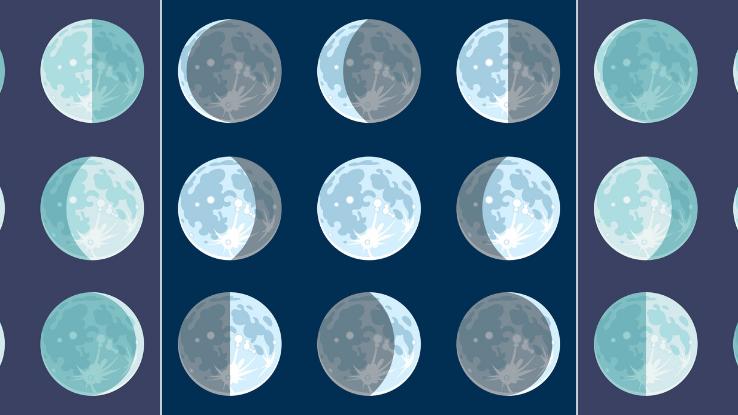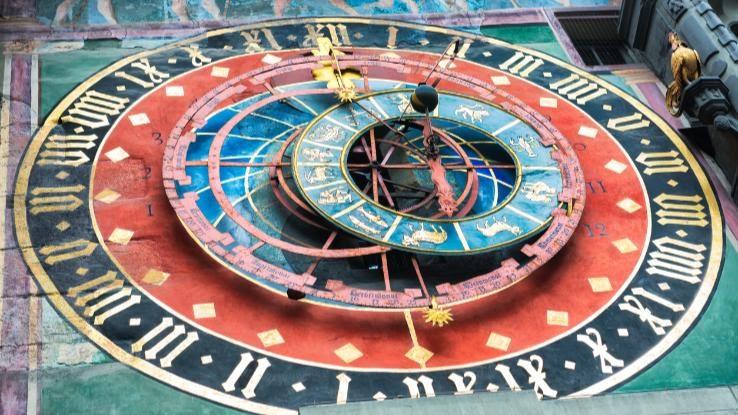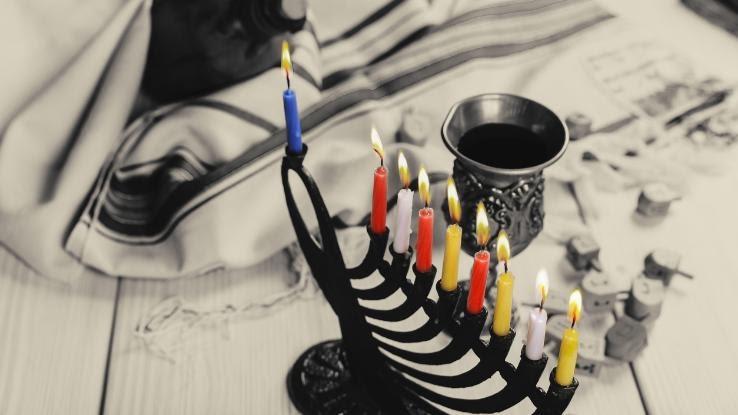How Does the Jewish Calendar Work? A Brief History of the Hebrew Calendar

Although most of the world relies on the Gregorian calendar, traditional lunar and lunisolar calendars are often used alongside the Gregorian calendar, allowing certain countries or faith groups to mark national holidays and religious observances. More commonly referred to as the Hebrew calendar, the Jewish calendar is one of those lunisolar methods of date-keeping.
As you might know, it determines when practitioners of Judaism will observe religious events, such as holidays and days that commemorate the passing of a relative, and helps specify Torah readings and daily Psalm readings. Here, we’re looking at the history of the Hebrew calendar, how it differs from the Gregorian calendar, and how it is used today.
The Jewish Calendar vs. the Gregorian Calendar
A modified version of Rome’s Julian calendar, the Gregorian calendar accounts for the inaccuracies of Julius Caesar’s time. Implemented in 1582 by Pope Gregory XIII, the Gregorian calendar accounts more accurately for the average solar year than its predecessor.
In fact, this involved shortening the average calendar year by .0075 days. That seems like a small miscalculation on the Julian calendar’s part, right? Well, if you take a more zoomed out approach, this slight miscalculation caused the calendar to drift over longer spans of time, thus misaligning the calendar date with the actual date of the equinoxes, for example.

So, what is a Jewish calendar year, and how does this method of timekeeping differ from the Gregorian calendar? For starters, the Hebrew calendar is a lunisolar calendar — years are based on both the cycles of the moon and the sun — whereas the Gregorian calendar is purely based on the cycles of the sun. This caused a few issues at first; the months in the Hebrew calendar revolved around the moon’s cycle, which meant they were between 29 and 30 days long.
However, the year of the Hebrew calendar revolved around the sun. With a few shorter months on hand, a few days were “left over” each solar cycle. To compensate, an additional month, known as Adar II, was added to the Hebrew calendar. It’s similar, in a sense, to leap years, though it’s much less frequent. That is, Adar II only occurs once every few years, based on a 19-year cycle. To be more specific, Adar II is added into the Hebrew calendar every 3rd, 6th, 8th, 11th, 14th, 17th, and 19th year, at which point a new cycle begins.
Who Uses the Jewish Calendar?
Today, a modern version of the ancient Hebrew calendar is used by Jewish people around the world. Although most Jewish folks use the Gregorian calendar in their everyday lives, the Hebrew calendar establishes their spiritual calendar by marking holidays and other religious observances.

If you don’t practice Judaism or use the Hebrew calendar, it may seem like the timing of certain holidays, like Hanukkah, fluctuate from year to year — but that’s not really the case. While Hanukkah’s date range seems to change according to the Gregorian calendar, it remains consistent on the Hebrew calendar, always beginning on the 25th of Kislev. Since the Hebrew and Gregorian calendars don’t always align, those who are only aware of the Gregorian calendar may notice that the 25th of Kislev may align with November some years and December in others.
The Importance of Rosh Chodesh
Although the Hebrew calendar can trace its origins way back, it has “remained unchanged since about 900 CE,” and accounts for dates stretching back to 3761 BCE, the year the Old Testament says the world began (via Yale University Library).
Rosh Chodesh, which literally means “head of the month,” marks the beginning of a new month on the Jewish calendar. The Book of Exodus 12:1–2 reads, “The Lord spoke to Moses and to Aaron in the land of Egypt, saying, This month shall be to you the head of the months; to you, it shall be the first of the months of the year,” which accounts for the origins of the term “Rosh Chodesh.”

When the Sanhedrin, or Jewish council, received two independent testimonies of the appearance of a new moon, they would declare what’s still known as Rosh Chodesh, and send messengers to let everyone know that a new month had begun. As you might expect, the new moon is a powerful symbol in Judaism and is often associated with new beginnings. Even now, each Rosh Chodesh is considered a minor holiday among Jewish people, who may wish each other “chodesh tov” — or “good month” — when it arrives.
One of Judaism’s holiest days is Rosh Hashanah — the Jewish New Year. As you might be able to guess, the holiday’s name means “head of the year.” Rosh Hashanah begins on the first day of Tishrei, which aligns with either September or October on the Gregorian calendar.
A Brief History of the Jewish Calendar
According to the Hebrew Bible, the Second Temple replaced Solomon’s Temple, the First Temple, after it was destroyed by the Babylonian Empire during their conquest of Jerusalem. Although a modest Second Temple was constructed as a replacement, Herod the Great and his Roman forces changed and then destroyed the Second Temple in 70 CE. So, how does this relate to the Hebrew calendar? As a result of ensuing invaders and conquerors, it became increasingly difficult for the Sanhedrin to spread the word of the new moon each month. Not to mention, Constantius II essentially outlawed the vital practice.

A Talmudic sage named Hillel II is often credited with establishing a fixed calendar around 359 CE — something that would alleviate the need to depend on the Sanhedrin’s declarations. Using both mathematical and astronomical calculations, Hillel II is believed to have standardized the months of the calendar. As the Jewish diaspora caused many to become disconnected, geographically, from their communities, the Hebrew calendar ensured that all practitioners of Judaism could observe holidays on the correct dates.
Months and Timeline of the Jewish Calendar
The Gregorian calendar’s 2021 and 2022 years align (in part) with the year AM 5782 on the Hebrew calendar. The Jewish calendar starts at the year 1 — in what would be 3761 BCE on the Gregorian calendar — and counts forward. As mentioned above, the calendar’s starting point was calculated as such because of when the Old Testament states the world began.

Rather than use BCE or CE, the Jewish calendar’s years are designated with “AM,” as in AM 5782. “AM” comes from the Latin term “anno mundi,” which means “the year of the world.” After all, each year is believed to designate how old the world is since year 1 is the date of creation. Additionally, the months on the Hebrew calendar have names that are distinct from those on the Gregorian and Julian calendars, and include the following:
- Tishri
- Cheshvan
- Kislev
- Tevet
- Shevat
- Adar
- Nisan
- Iyar
- Sivan
- Tammuz
- Av
- Elul
As we discussed above, Adar II accounts for leap years by adding an extra month to the Hebrew calendar, an occurrence that happens seven times in a 19-year cycle. Why the 19-year Metonic cycle? Well, 19 solar years are roughly the same length as 235 lunar months, so this calculation allows the lunar elements of the Hebrew calendar to stay pretty much in sync with the solar year.





